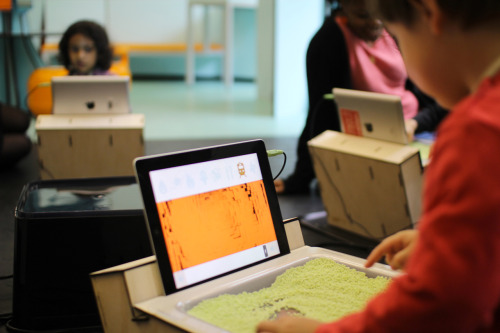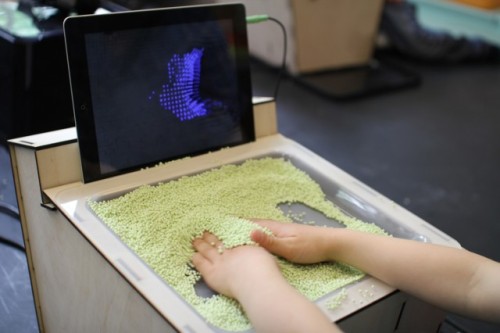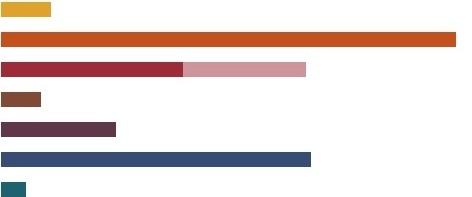DIRTI
 Monday, March 24, 2014 at 17:39 tagged
Monday, March 24, 2014 at 17:39 tagged  interactive,
interactive,  interfaces,
interfaces,  soundart,
soundart,  synthesis
synthesis At IRCAM, the Paris-based Institute for Research and Coordination in Acoustics/Music, Diemo Schwarz and his team have been developing the very interesting CataRT for quite some time now.
CataRT is a software instrument that realises interactive “corpus-based concatenative synthesis”. That means that it takes a sound, and splits it into little bits which it then analyses. These little bits can then be arranged according to loudness or pitch, for example, and can be played by navigating through the sonic landscape, or the “corpus” if you will. It’s like granular synthesis including knowing what all the grains are and being able to navigate them.
For DIRTI, Diemo Schwarz teamed up with UserStudio to create a physical interface with which children can play the little grains of sound, exploring the sonic body of the source.
There is a webcam under a transparent dish that contains the physical grains, tapioca grains in this case. The movement of the grains is tracked by a camera under the dish, and is sent to a Raspberry Pi, which in turn sends this information to an iPad where the interaction is visualised and sonified using the CataRT realtime sound synthesis system.
 I love installations or applications that are about exploring sounds and invoking active listening, especially for kids, as this really adds to their development. DIRTI makes it nice and tangible, making for a nice exploratory interface.
I love installations or applications that are about exploring sounds and invoking active listening, especially for kids, as this really adds to their development. DIRTI makes it nice and tangible, making for a nice exploratory interface.





